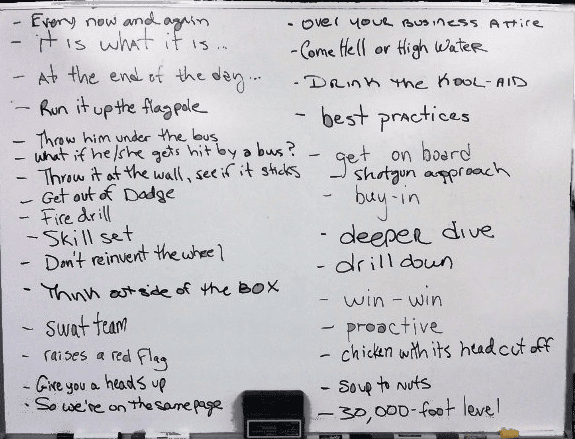SEO Clichés for Real Estate: Do They Hold True?
Every now and again, we always need to be proactive with our skill set and check that we’re up to speed with SEO best practices for real estate. From a 30,000 feet level, we try to make sure everyone is on the same page without reinventing the wheel. At the end of the day, if we can think outside of the box, throw a few things at the wall and see what sticks, it’s a win-win!
That all sounded a bit cliché didn’t it?
Well, it was all cliché. But did any of it make sense? Clichés are fascinating — since their very existence is born out of an axiom or self-evident truth. In SEO, we frequently find ourselves repeating the same terms, often out of habit, but also because from an understanding perspective, they do provide structure. There’s a danger of repeating clichés, especially in SEO, because the “best practices” are everchanging. What held true a few years ago can be outdated after a simple search engine algorithm change. The sports industry can get away with it; Unless the rules of a game change, players and coaches can always trot out the same bland clichés in post-match interviews, like “it was a game of 2 halves” or “We’ll take one game at a time.” In SEO, the goalposts often move.
So, are there any clichés that actually still hold true? Keep reading to find out how true these hold up and how you can leverage them to create an effective digital strategy for real estate.
1. Content is King
This one is an oldie but a goodie. It’s simple, but when you break down the complicated search algorithm, it simply wants better websites. And, this mostly has to do with content. Search engines are always picking up an array of signals that indicate if users like a website or blog and are making adjustments all the time, to weed out bad content and recommend better-quality websites. To create good content for your real estate website that helps your rankings, simply stuffing keywords on a page won’t help. The key is good content that’s engaging, meaning attractive to look at, and shows what the user is looking for. Lean towards copy that is easy to scan and contains images and/or video, both of which search engines can index.
2. Create with the User in Mind
Not only does the actual content on your website need to be clear, but how to navigate your real estate website itself, too. Quality, easily digestible, healthy content in the form of links, copy, headings, metadata, video, and images are key to creating an optimal user flow.
3. All Links Are Not Created Equal
This one is common sense, really, although it can be easy to get sucked into a bad link exchange or think that quantity is the goal. Most sites have to rely on a few good ones as opposed to an outrageously good one, but it happens! If you’re approached about a link exchange (for example, from a local restaurant or activities center), run a few tests on the linking site to check for relevance to yours. The more your blog and real estate website can become an authority on a subject (like the best restaurants in the area or top 10 things to do), the more likely other people will come knocking.
Similarly, on your own website, make sure you’re linking relevant content (to help with the user flow as mentioned above) and periodically checking to make sure that they aren’t broken.
4. Nothing Happens Overnight
For positive things like improved SERPs (search engine results pages) or link-building, you may be lucky if anything happens over the next year. The trick is figuring out at what point “things will happen.” The overall trust and authority (a cliché again there!) are the main factors, gained from solid on and off-page SEO built up over time. If enough relevant and trusted sources dig into your content, search engines will pay attention to this!
Though SEO best practices continue to change and vary industry by industry, some of the clichés still hold true and can be leveraged to create a digital strategy that helps you stand out online. If you’re looking for specific recommendations to help grow your business, reach out!









